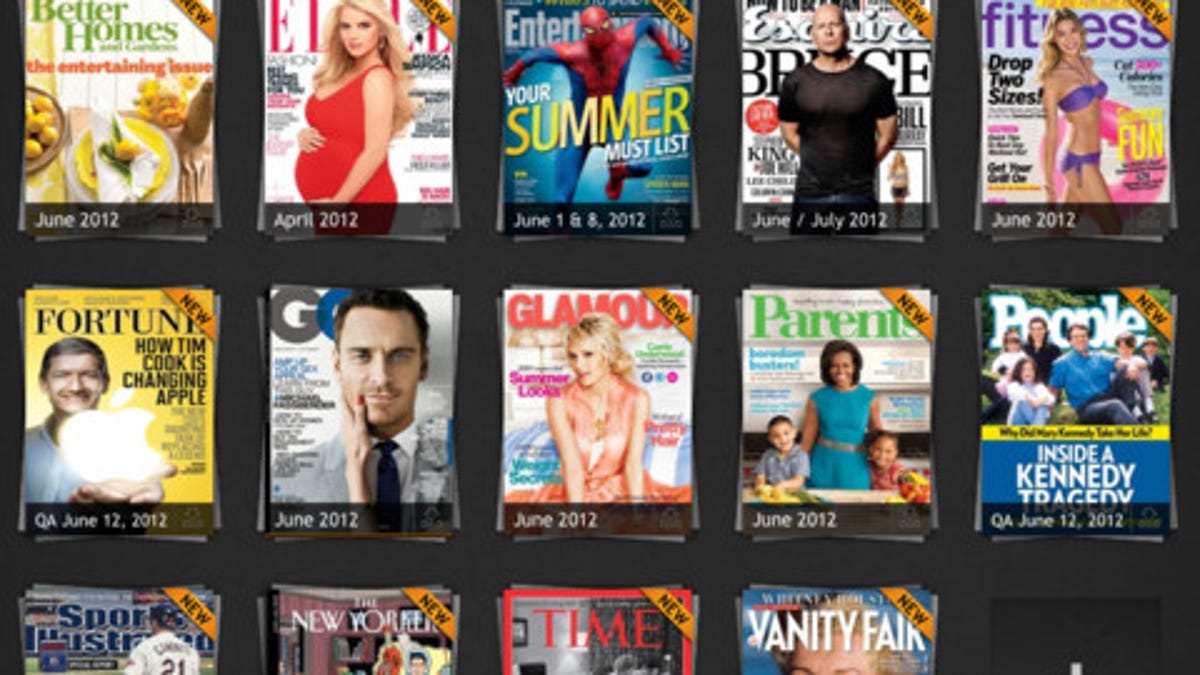Is 'Netflix-for-magazines' app Next Issue worth the money?
With monthly subscription rates as high as $14.99, this all-you-can-read service seems pricey. But is it really? We crunched the numbers.

I'm a magazine junkie. I grew up reading titles like Games, Omni, and Starlog, then moved on to every computer magazine I could get my hands on. (Show of hands: Who remembers Amiga World? PC/Computing?)
Eventually I started writing for them, and even went so far as to start my own magazine: Tap, a PalmPilot enthusiast rag that later became Handheld Computing. Good times.
Needless to say, it was with great interest that I learned of Next Issue, a Netflix-style magazine service that's now available for Android and iPad.
Although a growing number of magazines offer their own tablet editions, and services like Zinio have been serving up digital editions for a couple years, Next Issue is the first flat-rate subscription service.
By paying a flat monthly fee, you get access to every magazine in Next Issue's collection -- which currently counts nearly 40 titles. And not oddball trade pubs few people want to read, but mainstream periodicals like Better Homes and Gardens, Car and Driver, Money, and Sports Illustrated.
But here's the key question: is Next Issue a good value? Answer: it depends. Let's crunch the numbers.
A Basic subscription, which includes all monthly and biweekly titles (including all available back issues of each), costs $9.99 per month. Next Issue Premium runs $14.99 and adds weeklies like Entertainment Weekly, People, Sports Illustrated, and Time.
I'm going to focus on the Premium subscription, as I like to read three of the aforementioned weeklies. For purposes of price comparison, I headed to Magazines.com and looked at the annual rates for some of the titles Next Issue carries -- specifically, titles I already subscribe to or would enjoy reading. Here are the paper-edition prices (rounded to the nearest dollar):
- Bon Appetit: $20
- Cooking Light: $18
- Entertainment Weekly: $25
- Money: $15
- Sports Illustrated: $39
- Time: $30
- Wired: $20
- TOTAL: $167
That's a few dollars shy of the $180 I'd pay annually for Next Issue Premium, but close enough that I consider it to break even. Here's the thing, though: with Next Issue, I get access to some 30 additional magazines, with more on the way. (According to a Next Issue rep, the catalog will double in size by this fall.)
Update: As of February, 2013, the Next Issue catalog includes over 80 titles.
Update No. 2: As of October, 2013, the Next Issue catalog includes over 100 titles.
That's an awful lot of reading material, and although not all of it appeals to me, there are probably half a dozen health, fitness, and ooh-la-la titles that will cause my wife to steal the iPad when I'm not looking. (Next Issue doesn't mention the cost of buying a second tablet.)
Having already signed up for the 30-day trial, I've been putting the app through its paces. I somewhat expected that Next Issue's versions of certain magazines would lack the extras and/or interactive elements found in their standalone counterparts. But I was wrong: Entertainment Weekly's movie trailers, Wired's animations, and the like arrived intact. Impressive.
That just leaves me hungry for more titles, like Men's Health, Popular Science, Food Network Magazine, and maybe some kid-friendly pubs like Boys' Life and National Geographic Kids.
Even now, however, I think Next Issue represents a good value for folks who really like magazines. And if the catalog size really does double in the next couple months, so will the value.
What are your thoughts on this? Do you like the idea of an all-you-can-eat magazine service? Do you prefer to stick with paper periodicals? Let's hear from you in the comments.

